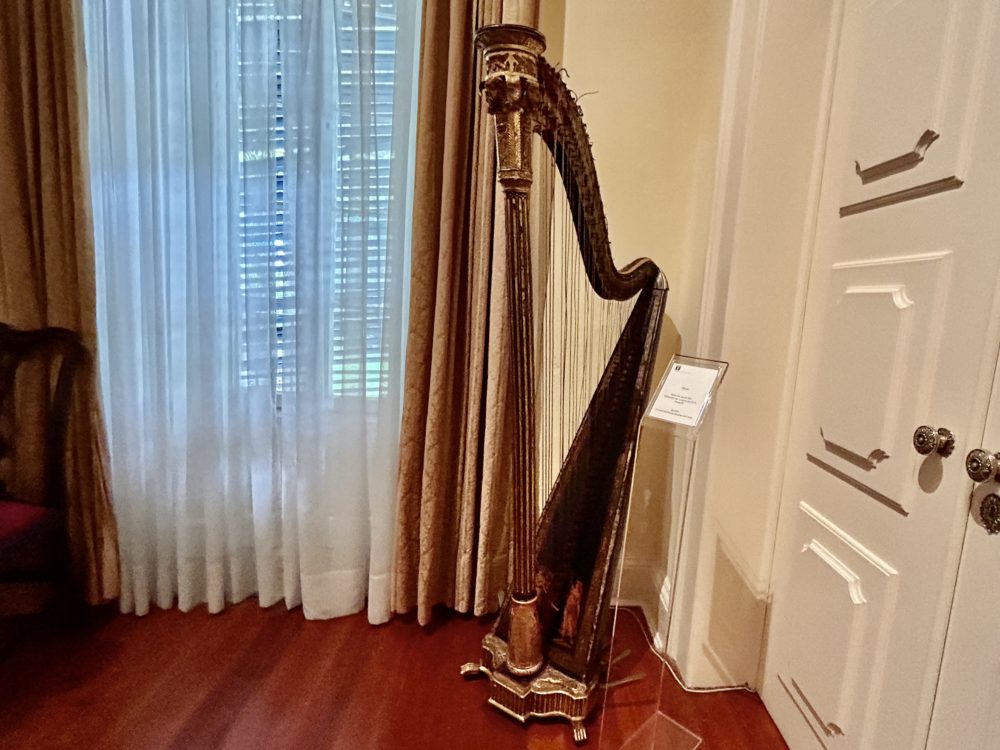In the Quinta das Cruzes Museum in Funchal, Madeira, lies a remarkable harp crafted by Johann Andreas Stumpff, a renowned German manufacturer who established his workshop in London in 1790. This exquisite instrument showcases Stumpff’s exceptional craftsmanship and highlights the rich musical heritage preserved at the museum.
Johann Andreas Stumpff: Master Harpmaker
Johann Andreas Stumpff (1769-1846) was a distinguished maker of pianos and harps. Born in Ruhla, Thuringia, he moved to London in 1790, where he became a prominent figure in the world of musical instrument manufacturing. Stumpff’s harps were celebrated for their superior quality and intricate design, earning him the title “Harpmaker to His Majesty.” His instruments were highly sought after by musicians and collectors.
The Harp at Quinta das Cruzes
The harp at Quinta das Cruzes is a testament to Stumpff’s skill and artistry. This beautifully crafted instrument features intricate carvings and a rich, resonant sound that captivates all who hear it. The harp’s presence in the museum adds a touch of elegance and historical significance to the collection, offering visitors a glimpse into the musical traditions of the past.
Delivery of Musical Instruments: Then and Now
Transporting delicate musical instruments like harps has always been a challenging task. In the past, harps were carefully packed in wooden crates and transported by horse-drawn carriages or ships. The journey was often long and arduous, with the risk of damage due to rough handling or adverse weather conditions.
Today, the delivery of musical instruments has become more sophisticated and secure. Modern packaging materials, such as foam padding and custom-fit cases, provide better protection during transit. Additionally, advancements in logistics and transportation ensure that instruments are handled with care and delivered promptly. Specialised courier services now cater specifically to the needs of musicians, ensuring that their valuable instruments arrive safely and in perfect condition.
The Fragility and Complexity of Playing the Harp
The harp is a delicate and complex instrument, requiring both skill and precision to play. Its many strings, typically made of gut, nylon, or wire, must be carefully tuned and maintained. The harp’s large size and intricate mechanism, including pedals that alter the pitch of the strings, add to its complexity.
Playing the harp demands precise hand coordination and a deep understanding of its mechanics. Harpists must master various techniques, such as plucking the strings with the fingers and using the pedals to change notes. The instrument’s fragility means that it must be handled with great care to avoid damage, making it both a challenging and rewarding instrument to play.
#MusicalHeritage #HarpMusic #JohannStumpff #QuintaDasCruzes #HistoricalInstruments













